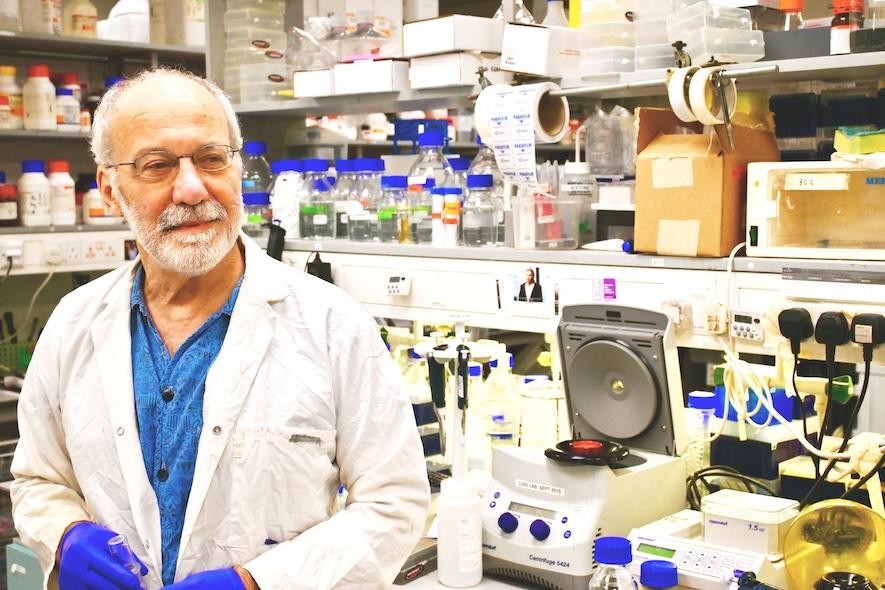
Machinery of riboregulation and transport.
We are studying multicomponent assemblies involved in the regulation of the expression of genetic information through controlling the fate of messenger RNA. We hope to understand how such post-transcriptional regulation enables rapid and specific response to developmental or environmental stimuli. We are studying assemblies that can target specific transcripts by interacting with non-coding regulatory RNAs, and our structural and biochemical studies are providing insight into the mechanism of this targeted gene silencing. Our structural data has enabled us to propose models for substrate recognition and allosteric activation of components of the assemblies.
We have also undertaken a study of the control of systems which transport proteins and antibiotics from the cell. We have obtained the structure of tripartite assemblies that span the cell envelope of Gram-negative bacteria. A structural view of these systems has helped to understand the molecular bases of bacterial virulence and drug resistance.
We directly visualise the individual components and their complexes at an atomic level using X-ray diffraction and cryo-EM to reveal the intricate and subtle structures which underlie these complexes. We also use a number of other complementary techniques to analyse macromolecular complexes.
Research objectives
-
How is RNA used to control gene expression?
-
How are the genes encoding components of transport assemblies regulated in a coordinate way, and how do the assemblies themselves operate?
Key publications
Du D, Wang Z, James NR, Voss JE, Klimont E, Ohene-Agyei T, Venter H, Chiu W, Luisi BF (2014). Structure of the AcrAB-TolC multidrug efflux pump. Nature, 509(7501):512-515. doi: 10.1038/nature13205
Wang Z, Fan G, Hryc CF, Blaza JN, Serysheva II, Schmid MF, Chiu W, Luisi BF, Du D (2017). An allosteric transport mechanism for the AcrAB-TolC multidrug efflux pump. eLife, 6:e24905. doi: 10.7554/eLife.24905
Bandyra KJ, Wandzik JM, Luisi BF (2018). Substrate recognition and autoinhibition in the central ribonuclease RNase E. Mol. Cell, 72(2):275-285. doi: 10.1016/j.molcel.2018.08.039
Pei XY, Dendooven T, Sonnleitner E, Chen S, Bläsi U, Luisi BF (2019). Architectural principles for Hfq/Crc-mediated regulation of gene expression. eLife, 8:e43158. doi: 10.7554/eLife.43158
Santiago-Frangos A, Fröhlich KS, Jeliazkov JR, Małecka EM, Marino G, Gray JJ, Luisi BF, Woodson SA, Hardwick SW (2019). Caulobacter crescentus Hfq structure reveals a conserved mechanism of RNA annealing regulation. Proc. Natl. Acad. Sci. U.S.A., 116(22):10978-10987. doi: 10.1073/pnas.1814428116
Dendooven, T., Sinha, D., Roeselová, A., Cameron, T.A, De Lay, N., Luisi, B.F., and Bandyra, K.J. (2021). A cooperative PNPase-Hfq-RNA carrier complex facilitates bacterial riboregulation. Mol. Cell. 81, 2901-2913. doi: 10.1016/j.molcel.2021.05.032. PMC82994330
Islam, M.S., Hardwick, S.W., Quell, L., Durica-Mitic, S., Chirgadze, D.Y., Görke, B. and Luisi, B.F. (2023) Structure of a bacterial ribonucleoprotein complex central to the control of cell envelope biogenesis. EMBO J, 42. doi: 10.15252/embj.2022112574. PMC9841335
Dendooven, T., Sonnleitner, E., Bläsi, U. and Luisi, B.F. (2023) Translational regulation by Hfq-Crc assemblies emerges from polymorphic ribonucleoprotein folding. EMBO J, 42. doi: 10.15252/embj.2022111129. PMC9890229
Meynier, V., Hardwick, S.W., Catala, M., Roske, J., Oerum, S., Chirgadze, D.Y., Barraud, P., Yu, W., Luisi, B.F. and Tisné, C. (2024) Structural insights into tRNA maturation in human mitochondria. Nature Communications, 15 4683. doi: 10.1038/s41467-024-49132-0. PMC11144196
Bandyra, K.J., Fröhlich, K.S., Vogel, J., Rodnina, M., Goyal, A. and Luisi, B.F. (2024) Cooperation of regulatory RNA and the RNA degradosome in transcript surveillance. Nucleic Acids Res, 52, 9161-9173. doi:10.1093/nar/gkae455. PMC11347162
McQuail, J., Krepl, M., Katsuya-Gaviria, K., Tabib-Salazar, A., Burchell, L., Bischler, T., Gräfenhan, T., Brear, P., Šponer, J., Luisi, B.F. and Wigneshweraraj, S. (2025) Transcriptome-scale analysis uncovers conserved residues in the hydrophobic core of the bacterial RNA chaperone Hfq required for small regulatory RNA stability. Nucleic Acids Res., 53. doi: 10.1093/nar/gkaf019. PMC11770335
Paris G, Katsuya-Gaviria K and Luisi BF (2025). Machinery, mechanism, and information in post-transcription control of gene expression, from the perspective of unstable RNA. Quarterly Reviews of Biophysics. doi: 10.1017/S0033583525000022
Roske JJ, Paris G, Goyal A, Rodnina M, Zenkin N, Bandyra KJ, Luisi BF (2025) Structure of the 30S translation initiation complex coupled to paused RNA polymerase and its potential for riboregulation, biorxivs and under revision.
Paris G, Katsuya-Gaviria K, Clarke H, Johncock M, Dendooven T, Lulla A, Luisi BF (2025) A multi-dentate, cooperative interaction between endo- and exo-ribonucleases within the bacterial RNA degradosome, biorxivs and user review.
Horne J, Kaplan E, Jin BHS, Petsolari E, Gradon J, Ntsogo Y, Harris A, Yu DG, Luisi BF (2025) A lipoprotein partner for the Escherichia coli outer membrane protein TolC – biorxvis and under review.
